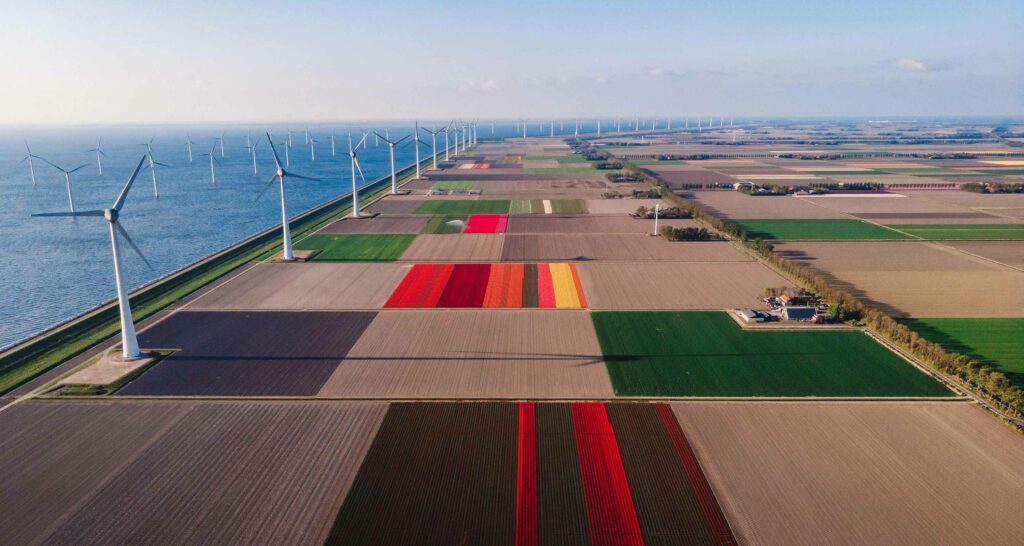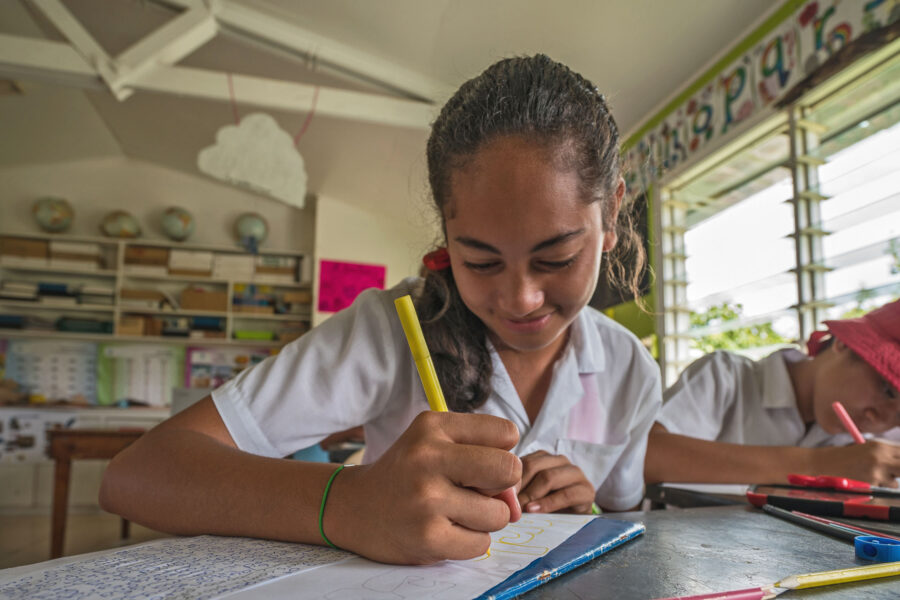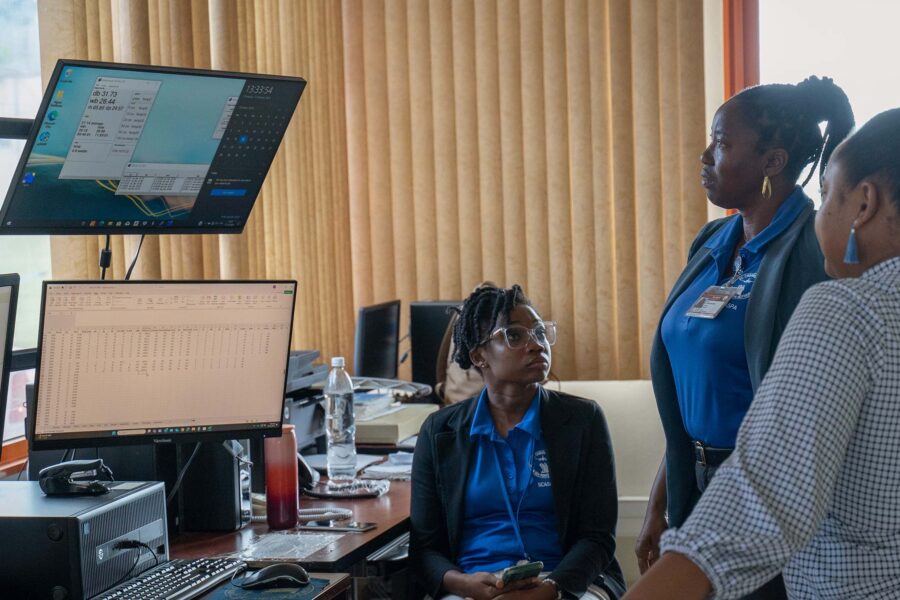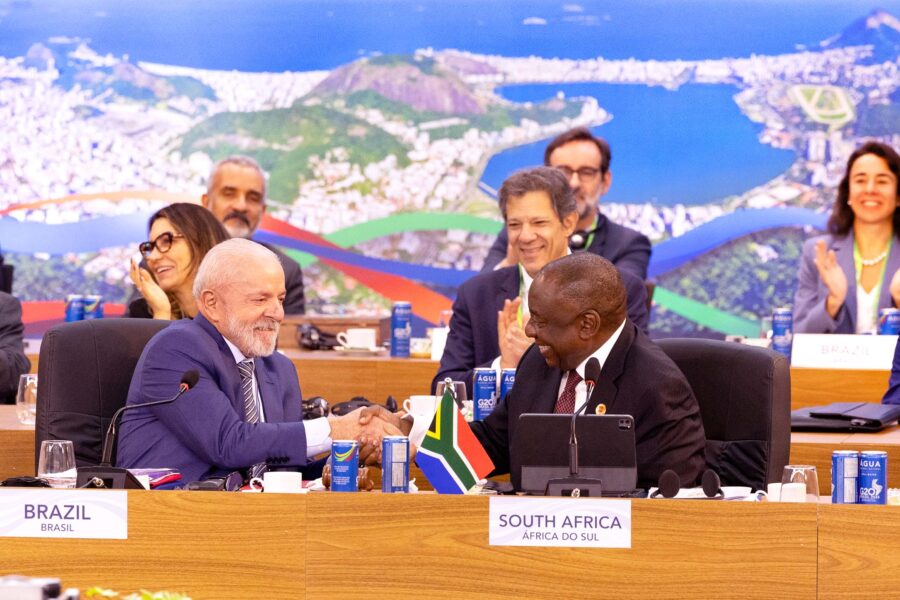Learning from COVID to deliver a transformative COP
The experience of COVID has fundamentally changed our understanding of country risks. These lessons need to shape and drive COP26
Climate

All eyes are currently on Glasgow for the 26th UN Climate Change Conference of the Parties (COP26). The one-year postponement left us with a year of reflection on how to make Glasgow a real turning point in the climate change fight. Forward-thinking governments and institutions such as the EU are making significant progress on climate action at home, as handling the COVID-19 storm tails off. Around the world, several stakeholders are taking into account climate diplomacy and investing in climate.
The pandemic has magnified the risks already present at both public and business level. During the crisis, we have been able to ponder the links between social factors and the effects of the virus along different patterns of wealth distribution, clearly defining the present situation as a syndemic rather than a pandemic. It is a syndemic that has ushered in a “new normal” for humanity, characterized by two phenomena:
- directly or indirectly affecting health and healthcare systems, alongside worsening global inequality, triggering an array of physical risks for our socio-economic systems – from Europe’s floods to wildfires in the Americas, from droughts in Africa to tropical storms in Asia – with climate and weather-related disasters surging fivefold over 50 years
From the many lessons learned from COVID-19, there is a tremendous opportunity to reconsider the way we measure systemic risks in finance, including new and more fitting dimensions and parameters. There is also the need to look at new methodologies. More than a decade ago, a report by the Commission on the Measurement of Economic Performance and Social Progress (CMEPSP) reminded us of the problems of using gross domestic product as a unidimensional measure of macroeconomic progress and proxy for economic well-being.
Yet, this was by no means a new critique. Simon Kuznets – one of the main originators of GDP in the 1930s – was already aware of GDP’s limitations and believed it was not a proxy for wealth on its own. Today, we have come a long way. In 2018, the Nobel Prize in economic sciences was awarded for integrating climate change and technological innovations into long-run macroeconomic analysis. A year later, the prize went for work on an experimental approach to alleviating global poverty. The “prosperity puzzle” is currently top of the agenda of international institutions. Yet, in 2021, the risks and opportunities associated with messing up the puzzle – or precisely how to solve it – are still not widely considered and properly calculated.
Ensuring equitable wealth distribution by fighting climate change and speeding up the just energy transition are indispensable pre-conditions to ensure prosperity for all in the new normal. They have become relevant targets for some nations and forward-thinking companies. But the risks related to falling short on those targets have not yet become part of the more traditional country risk classification methodologies, while only a few are reconsidering the role the state can play.
COP26 is a critical moment in driving investment decisions to tackle climate change effects (and the related socio-economic inequalities) and enable the energy transition. We believe it is vital to find suitable ways to embed climate action into economic and business practice. We have tested a method to improve traditional country risk methodologies by reconsidering and eventually eliminating four fundamental biases. These are:
- a slow-bureaucratic state versus a dynamic private sector
- GDP as a proxy of wealth
- significant weather events categorized as extreme and exceptional
- the energy system as a commodity
As mentioned, the magnifying effect of COVID is helping us to re-examine these biases. Together, the Italian export credit agency SACE and the Enel Foundation have worked to build an advanced risks and opportunities model at the country level that allows more precise assessments and enables the formulation of more effective investment plans to ensure sustainable development for all. The model also highlights, and hopefully avoids, any losses deriving from risks of non-payment, and political risks associated with foreign direct investments. We have reached four key conclusions, explained in turn below.
Entrepreneurial state
Over the last 12 months, the world has come to appreciate the benefits of an entrepreneurial state and active supranational organization. As hundreds of new vaccine research efforts and massive vaccination campaigns can demonstrate, or looking at the role the EU is taking in transitioning into green energy with the Fit for 55 legislative package. States are playing an essential role in enabling radical transformation to ensure a sustainable future for all.
Clearly, the Covid-19 fight and the energy transition are not the only realms in which we can observe public institutions creating value for society. If we look, for example, at climate change research, nearly all the literature sees public institutions in a leadership role. Indeed, to build back better we need to remember the important role all stakeholders can play, from public entities to private businesses. However, we must avoid the downfall of excessive government interference in market mechanisms. States should leverage debt for stronger physical and digital infrastructures and forward-looking scientific research, rather than support unproductive subsidies.
Wealth
For around a decade, economists have debated how to accurately define and measure “inequality.” This has seen less reliance placed on measures such as income or consumer expenditure and a move toward more holistic data sets, such as the 11 parameters taken into account by the OECD Better Life Index. Traditional data is now considered alongside subjective well-being measurements such as the Cantril self-anchoring striving scale.
Yet, as recently reaffirmed by the Club of Rome, “societal needs are still unmet, economic gains are shared unequally and the social contract is eroding.” It is precisely to start measuring the risks raised by this progressive erosion, exacerbated by the COVID crisis and climate change, that we propose to monitor wealth starting with demographic and income composite measurements as a baseline, with health, education, and jobs as essential instruments to ensure well-being over time.
New normal
Traditional country risk classification methodologies recognize climate change effects – such as cyclones, floods, and tidal waves – as cases of force majeure. In this, they fail to recognize that we are in a new normal where such events are indeed extreme, however those are no longer exceptional. Indeed, the dynamic of relevant loss events related to climate and weather shows a substantial growth since 1980, and disasters around the globe in 2021 confirm such a progression.
If we observe the convergence between the different degrees of anthropization (the rapid growth of megacities and related resources) and the geo-localization of natural loss events, it becomes clear how the risk is growing substantially. Analyzing all those data – and many more that the scientific community is monitoring, from CO2emissions to the shrinkage of glaciers from the Andes to the Alps – it is clear that a new normal condition is here to stay. It is a condition in which humanity around the world must operate, characterized by increased hazard exposure and vulnerability.
This new normal, we believe, has to more decisively make its way out of the scientific realm and supranational organization into government cabinet and boardrooms globally. It must now be systematically factored into country risks assessment.
To serve this purpose, the Enel Foundation and SACE have initiated the monitoring of some of the main climate hazards (such as floods and heatwaves). These have been determined principally by high temperature, hydrogeological fragility, and storms – and considering communities’ vulnerability in their given environmental and socio‐economic context.
To complete our risk profiling per country, we run scenario analysis, starting with historical data and projecting up to 2050 and 2100. This shows to what extent climate change makes weather extremes the new normal. This confirms that we should reconsider the concept of force majeure related to meteorological events in risk analysis (although it will no doubt still be debated in court). This is precisely because extreme events are no longer unforeseeable, and to a certain extent are not unavoidable. Rather, they can somehow be considered the result of human inaction in achieving a lower footprint on the Earth and building a climate-proof society.
Energy transition
The International Energy Agency has confirmed in its forecast the extent to which the COVID crisis has influenced the energy sector globally – probably more than any other crisis in modern times. Oil prices have fallen below zero for the first time in history and are bouncing back in a perennial volatility . Forward-looking electricity players have started to eclipse the big oil majors by multiplying their renewable-energy capacity and transforming the grid to prepare for a full-electric future. We have come to learn that energy systems do not tend to fit any more completely within the commodity-based paradigm we were all used to.
Classical energy “supply, demand, and storage” schemes at a system level are being partially replaced by the possibility of decoupling energy production and usage from fuel availability and cost – with relevant market and geopolitical consequences. Indeed, in pure market terms, increasingly cheaper renewable power compares to any new electricity capacity based on fossil fuels – even without factoring negative externalities of the latter – is decisively attracting investments. At country level, the transition will reduce fuels import dependency, thanks to local renewable energy resources. At a global level, it will trigger a re-balancing in material flows and international relationships.
However, only the active pursuit of the energy transition on all fronts – from policy to regulation, from health to education – will allow countries to benefit most from this opportunity, especially as they recover from the COVID crisis. Precisely to start assessing the rising risks of slow progress on the energy transition race – exacerbated by the COVID crisis and climate change – and the opportunities ahead of a decisive move toward the transition, we decided to monitor five variables:
- fossil fuels
- greenhouse gas emissions
- energy efficiency
- electrification
- renewable generation
The first two are included to establish a baseline of stranded or potentially stranded assets, and flow or stock pollution. The final three variables are the essential elements to ensure a successful energy transition over time.
Conclusion
The proposed new mindset on country risks and opportunities modeling will, in our humble opinion, accelerate the recovery. We believe nations can build consensus for COP26 to define a turning point in measuring the new normalconditions we are living in. We can better mitigate and adapt to climate change, and leverage the tremendous opportunities generated by the energy transition policy and movements.





